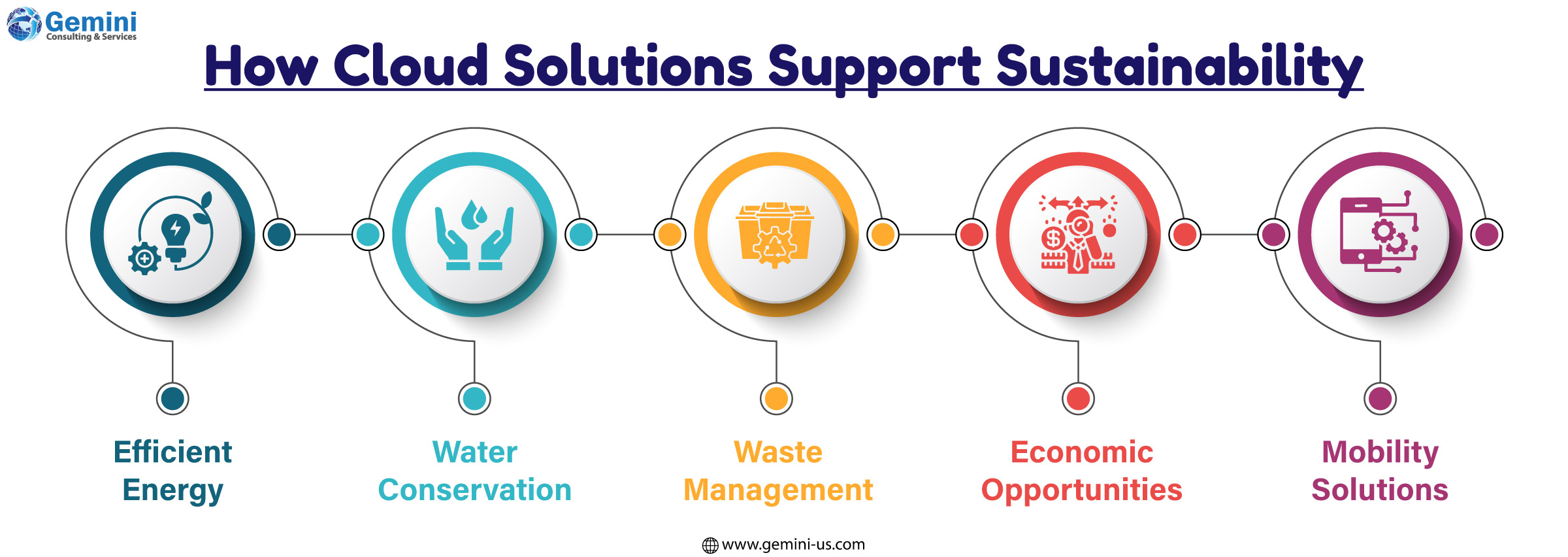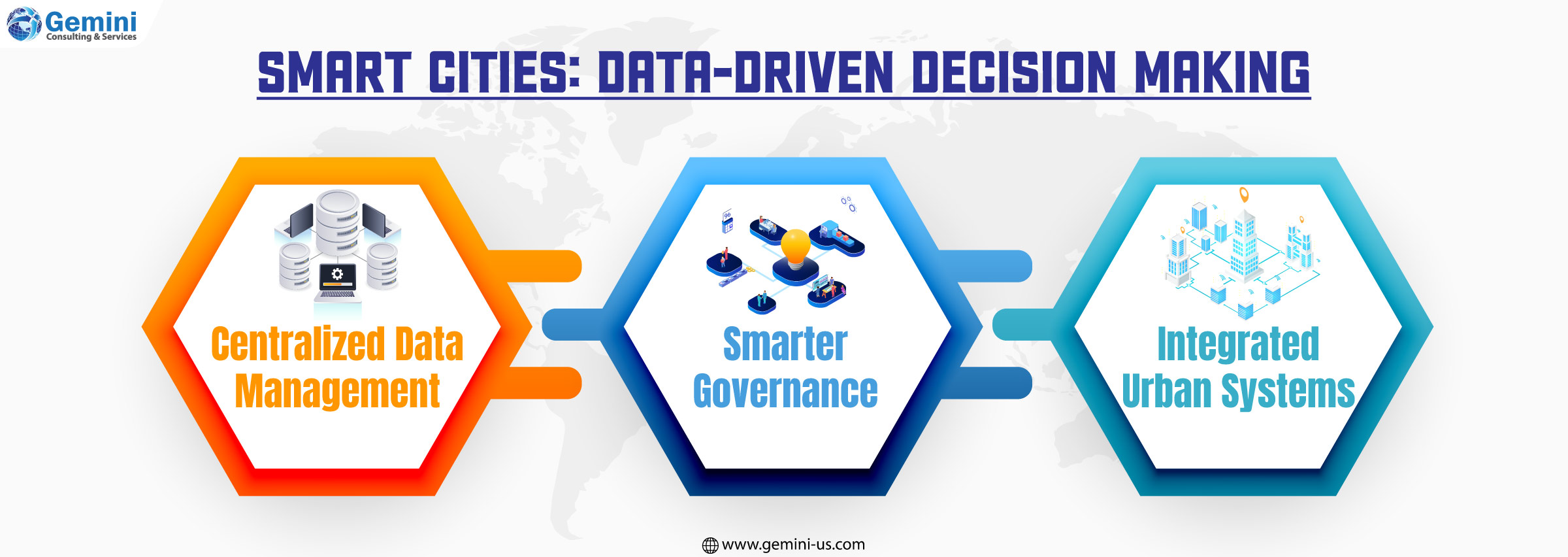Worldwide, cities are growing at a faster pace. The United Nations predicts a major spurt in the number of people shifting to urban areas worldwide. With the urban population expected to become 68% of the worldwide population by 2050, it is likely to bring opportunities for innovation, economic development, and cultural exchange. But it also presents enormous challenges. Cities must find ways to manage limited resources, ensure public safety, reduce pollution, and deliver essential services to millions of people. The question is: how can urban areas adapt to this rapid growth while remaining sustainable and livable?
Digital transformation using cloud technology can be the solution to this. The cloud has evolved from being a storage solution to a powerful enabler of sustainable urban development. By integrating cloud platforms with Internet of Things (IoT), Artificial Intelligence (AI), and real-time analytics, cities can optimize resources, reduce environmental impact, and enhance the quality of life for residents. In short, cloud-powered smart cities are becoming the blueprint for a greener and more resilient future.

Efficient resource management is a key element of sustainability. Cloud technology allows cities to monitor, assess, and enhance resource utilization across various sectors.
- Energy: Smart grids powered by cloud platforms balance demand, monitor energy consumption patterns, and integrate renewable sources such as wind and solar. This reduces waste, minimizes blackouts, and lowers greenhouse gas emissions. Peak usage hours can be estimated based on predictive analytics. This in turn can be used to adjust supply accordingly.
- Water: Globally, many cities are staring at depleting water tables. Cloud-enabled systems collect real-time data from sensors embedded in pipelines and treatment plants. By identifying leaks, monitoring usage trends, and forecasting demand, cities can reduce wastage and conserve this vital resource.
- Waste Management: Collecting waste using traditional methods are inefficient due to fixed schedules as it can lead to bins overflowing. IoT sensors linked to the cloud can solve this issue by signalling when the bins are full. This data-driven approach optimizes collection routes, reduces fuel consumption, and decreases overall costs.
- Economy
The goal is to reshape and strengthen the local economy by making the city more attractive to entrepreneurs, investors, businesses, and skilled professionals. Encouraging innovation and ensuring sustainable growth are key priorities to enhance overall economic performance. Cloud solutions can help achieve these goals. - Mobility
One of the defining features of a smart city is its efficient urban transport system. By promoting innovative mobility solutions based on cloud, optimizing traffic management, and investing in smart infrastructure, cities can make movement smoother, more accessible, and widely accepted by residents.
Environmental Monitoring and Pollution Control
Pressure is mounting on city administrations around the world to improve the quality of air and traffic snarls. Cloud technology is essential in addressing these challenges.
- Air Quality Monitoring: Cloud platforms aggregate data from environmental sensors to track pollutants such as carbon monoxide, nitrogen oxides, and particulate matter. This real-time monitoring empowers policymakers to implement timely interventions like traffic restrictions or awareness campaigns.
- Traffic Flow Management: Cloud-based analytics enable the processing of data collated from various sources such as cameras, GPS devices, and sensors. These insights help cities ease congestion, redesign road networks, and promote eco-friendly transport systems. If congestion is reduced, it can lead to savings in fuel and reduction in emissions.
Efficient and Scalable Infrastructure
Unlike traditional data centers that require large physical infrastructure, cloud services provide scalable solutions that expand as a city’s data needs grow. This flexibility minimizes the environmental footprint and supports rapid innovation.
- Lower Energy Use: Cloud providers employ advanced cooling systems, virtualization, and renewable energy sources to reduce energy consumption.
- Circular Economy Practices: Virtualization helps prolong the life of hardware by minimizing the need for frequent upgrades. Older equipment is either refurbished, recycled, or repurposed, which helps reduce electronic waste.

Smart cities generate enormous amounts of data daily, from transportation networks and energy grids to healthcare systems and public services. Without proper tools, managing this data becomes overwhelming. Cloud technology addresses this challenge by offering centralized platforms for storage and analysis.
- Centralized Data Management: A unified platform enables city leaders to view and analyze diverse datasets holistically.
- Smarter Governance: Predictive analytics powered by AI and machine learning can forecast urban challenges such as rising energy demand or potential traffic bottlenecks. Leaders can then act proactively rather than reactively.
- Integrated Urban Systems: Cloud platforms interconnect various services like traffic management, utilities, and public transport, creating a seamless urban ecosystem. This integration leads to more coordinated, efficient, and citizen-friendly services.
The Evolution of Smart Cities
Digital technologies play a major role in enhancing the lives of residents in a smart city. They also use technology for economic growth and improve environmental sustainability.
For instance Miami-Dade County in the US has millions of residents depending on its water and sewer system, aging infrastructure had become a major challenge. By adopting IoT sensors and cloud-based monitoring, the county improved water management efficiency and reduced operational costs. This not only benefited residents but also ensured long-term sustainability of essential services.
Such examples highlight the real-world impact of combining cloud, IoT, and AI in transforming urban living.
Cloud Computing as a Green IT Enabler
Cloud computing also plays a vital role in reducing the environmental impact of businesses and governments.
- Resource Optimization: Unlike traditional on-premises servers with fixed capacity, cloud platforms offer flexible scaling. This adaptability reduces wasted energy from idle or underutilized systems. Research indicates that moving workloads to the cloud can lower energy use by as much as 80–87%.
- Commitment to Renewable Energy: Major cloud providers, including Google Cloud, Microsoft Azure, and AWS, are making significant investments in clean energy. Google has set a target to run entirely on renewable power by 2030, while Microsoft is working toward becoming carbon negative within the same timeframe. Amazon Web Services (AWS) is looking at completely shifting to renewable energy sources by 2025.
- Reducing E-Waste: By virtualizing resources and optimizing hardware usage, cloud computing reduces the frequency of upgrades and minimizes electronic waste. Providers also implement recycling and refurbishment programs as part of circular economy initiatives.
Aligning Cloud with ESG Goals
Sustainability is no longer a “good to have.” It is now central to corporate strategies, especially under Environmental, Social, and Governance (ESG) frameworks. Cloud adoption supports these goals in several ways.
- Environmental Impact: Migrating workloads to the cloud helps organizations achieve carbon reduction and net-zero targets. Many cloud providers also offer carbon-tracking tools that give businesses real-time insights into their environmental performance.
- Social Responsibility: Cloud services enable remote and hybrid work models, reducing commuting-related emissions. They also enhance accessibility by allowing employees and citizens to collaborate digitally, cutting down the need for resource-intensive in-person operations.
- Governance and Compliance: Leading cloud providers ensure compliance with global sustainability standards, including the Greenhouse Gas Protocol, Carbon Disclosure Project (CDP), and the Science-Based Targets initiative (SBTi).
Best Practices for a Sustainable Cloud Strategy
For organizations and governments, simply migrating to the cloud is not enough. To fully unlock sustainability benefits, a well-structured cloud strategy is essential.
1. Choose Green Providers: Partner with cloud vendors committed to renewable energy and carbon neutrality.
2. Optimize Workloads: Use auto-scaling, right-sizing, and intelligent workload balancing to reduce unnecessary energy use.
3. Adopt Serverless Computing: Minimize reliance on physical servers for improved efficiency.
4. Track Sustainability Metrics: Use built-in carbon monitoring tools to measure and optimize performance.
5. Embrace Circular IT Practices: Extend hardware lifecycles and reduce e-waste through recycling and refurbishment programs.
Gemini Consulting & Services offers cloud technologies to build smart, citizen-friendly cities. Our solutions enable administration to integrate diverse systems for better planning and citizen-centric services. Contact us to build smart cities that offer improved living standards and great economic opportunities.
Final Thoughts: Building Future-Ready Cities
The future of cities depends on how effectively they can balance growth with sustainability. Cloud technology is not just an enabler of digital transformation, it is a catalyst for environmental stewardship, economic development, and improved quality of life.
By embracing cloud-driven innovation, cities and businesses can cut costs, reduce emissions, enhance efficiency, and foster long-term resilience. Smart cities powered by the cloud are more than just a vision. They are an emerging reality that promises safer, greener, and more inclusive urban environments.
As governments, organizations, and citizens collaborate, cloud solutions will continue to shape cities into hubs of innovation and sustainability, future-proofing our world for generations to come.



